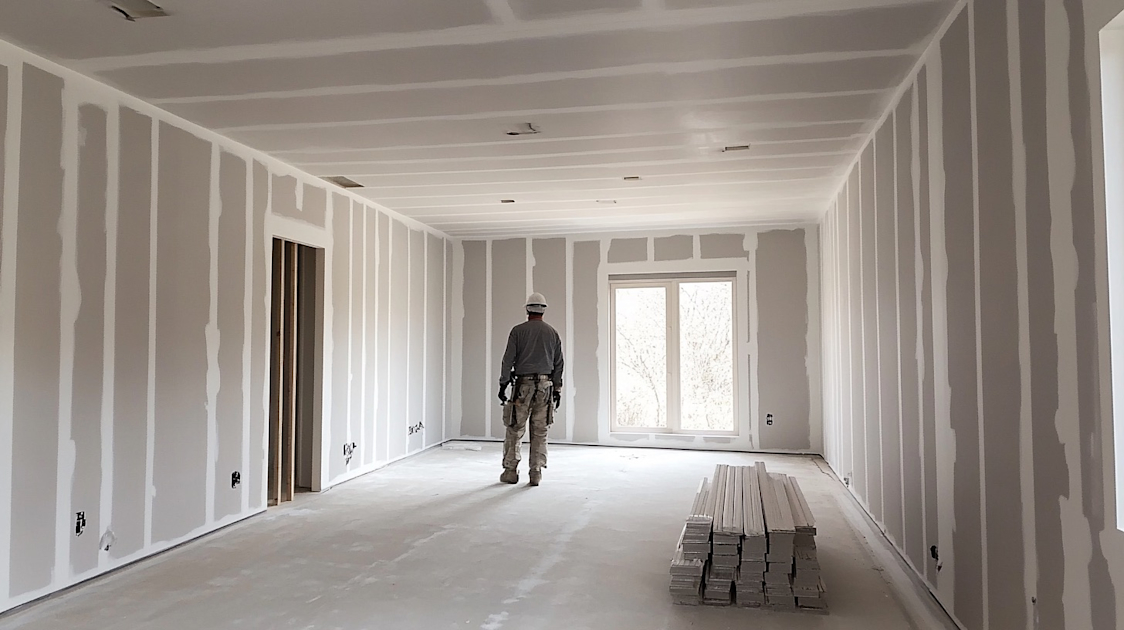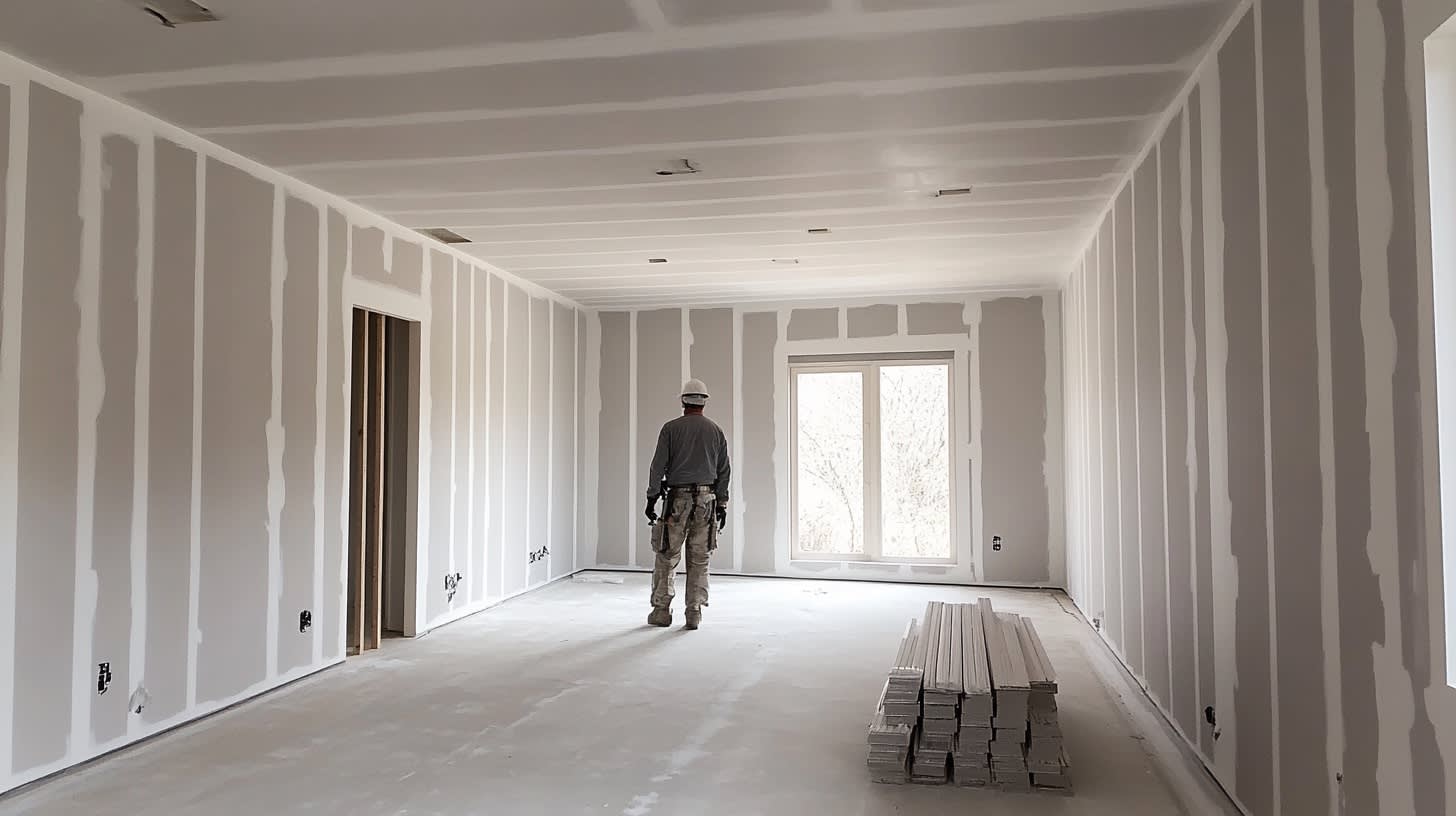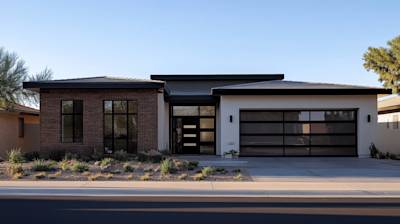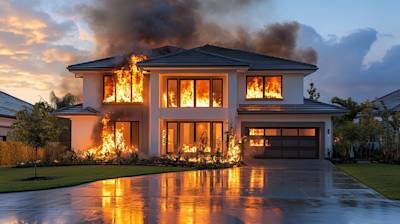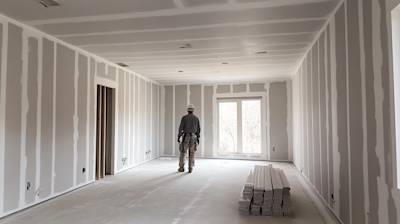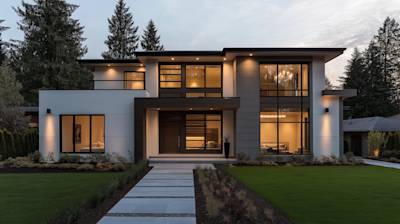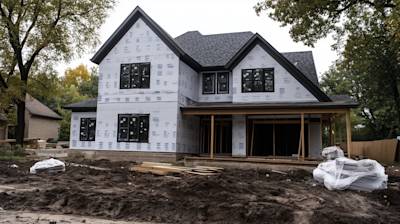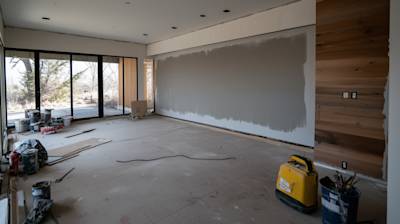Gypsum Wallboard, also known as drywall, gypsum board, or plasterboard, is a type of building material used worldwide for its superior properties and countless benefits. This blog post will delve into the details of gypsum wallboard and provide essential information about its composition, types, manufacturing process, application, benefits, and more.
Composition of Gypsum Wallboard
Gypsum wallboard is primarily composed of gypsum, a naturally occurring mineral. The core component of gypsum wallboard is a rock-like mineral known as calcium sulfate dihydrate or more typically, "gypsum". This gypsum is ground into a fine powder, which is then mixed with additives like starch, paper pulp, and a setting retarder.
- Calcium sulfate dihydrate (gypsum)
- Paper for the face and back
- Additives like starch, fiberglass, or other materials for improved performance
The resultant mixture sandwiched between two sheets of heavy paper forms the gypsum wallboard.
Manufacturing Process of Gypsum Wallboard
Preparation of Raw Material
Gypsum is the basic raw material required to produce gypsum board. Mined or synthetic gypsum is crushed to a fine powder and then heated to remove three-quarters of the bound water, resulting in calcined gypsum.
Mixing the Calcined Gypsum and Additives
Following calcination, the gypsum is sent to the board plant where it's mixed with water and additives. This resultant slurry is then spread onto paper liners to form the board.
Drying and Final Steps
Next, the wet board is passed through overhead conveyors in a drying kiln to remove the excess moisture. After drying, it's cut to the desired length and sent for packaging.
Different Types of Gypsum Wallboard
Gypsum wallboard is available in several different types, each designed for specific uses.
- Standard Gypsum Board: Widely popular, the standard gypsum board is suitable for both residential and commercial spaces.
- Moisture-Resistant Gypsum Board: Also known as green board, it's intended for use in damp areas like kitchens, showers, etc.
- Fire-Resistant Gypsum Board: These wallboards are used in fire-rated construction due to their resistance to fire.
- Sound-Proof Gypsum Board: Ideal for places where noise reduction is required.
Gypsum Wallboard Applications
Gypsum wallboard is predominantly used in modern construction for a variety of applications:
- In residential construction, it's primarily used as a finishing material.
- It serves as fire protection in commercial high-rises.
- It is also used to construct quality walls and ceilings.
Frequently Asked Questions about Gypsum Wallboard
How is Gypsum Wallboard manufactured?
Gypsum wallboard is manufactured using a continuous process that consists of several essential stages. First, the gypsum ore is mined and then it’s heated to remove any water (calcination process). Once the water is removed, it's ground into a fine powder which is then mixed with water to make a paste. This paste is combined with various other materials and then sandwiched between two layers of paper. This sandwich is then heated to dry and harden it, creating the final product which is commonly known as gypsum wallboard.
Can Gypsum Wallboard be used in wet areas?
While standard gypsum wallboard is not suitable for areas where it could become wet or damp, there are variations that are specially designed for this purpose. These include green board (also called moisture-resistant drywall) and cement board. These types of wallboard are ideal for areas such as bathrooms or basements where moisture is a common issue. However, it's important to note that these are not waterproof, only moisture-resistant.
How is Gypsum Wallboard installed?
Gypsum wallboard is typically installed by applying it directly to the wooden frame of a wall or ceiling with screws or nails. It can also be applied over an existing surface using adhesive. After the wallboard is secured, seams between sheets are filled in with joint compound and sealed with joint tape. The surfaces are then sanded until smooth. Lastly, the wallboard is commonly painted or treated with a finish to complete the job.
What are the different types of Gypsum Wallboard available?
There are various types of gypsum wallboard available, each designed for a specific purpose. Regular gypsum wallboard is the most common type used in residential and commercial buildings. Green board is designed to be more moisture-resistant, making it suitable for damp locations. Fire-resistant wallboard is treated with additional materials to give it a higher fire-resistance rating. You'll also find specialized gypsum wallboard such as acoustic, flexible, and impact-resistant wallboards.
Can you paint directly onto Gypsum Wallboard?
Yes, you can paint directly onto new gypsum wallboard. However, it's recommended to first apply a primer. Priming the wallboard creates a sealed and uniform surface for your paint to adhere to, resulting in a longer-lasting and better-looking finish.
Is Gypsum Wallboard recyclable?
Yes, indeed! Gypsum wallboard is a highly recyclable material. The gypsum core can be ground up and used to make new wallboard, or can even be used as a soil additive in agriculture. It's also possible to recycle the paper covering.
How should you handle and store Gypsum Wallboard?
Avoid impact or dropping the gypsum wallboard to prevent damaging the edges or corners. For storage, it should be kept in a dry, covered area. Lay it flat to prevent it from warping over time, and don't stack too many sheets on top of each other to prevent damage.
Pros of Using Gypsum Wallboard
Affordable Option
Compared to many other building materials, like plaster or concrete, gypsum wallboard is a more affordable solution. This is especially beneficial for large construction projects or for those working within a tight budget.
Simplified Installation Process
Gypsum wallboard boasts a simplified installation process when compared to other wall materials. Unlike traditional plastering, gypsum wallboard doesn’t require multiple coats, thus saving both labor and time. The board can be easily cut for installation and can be installed quickly using screws.
Fire-Resistant in Nature
One of the main advantages of gypsum wallboard is its natural fire-resistance. This is due to the crystalline water present inside the gypsum, which, when heated, evaporates and combats the spread of fire for a certain duration, thus buying crucial time for evacuation.
Soundproofing Capabilities
Gypsum wallboard provides a degree of sound insulation, helping to create quieter homes or workspaces. This can be of great benefit in high-traffic places or noisy urban environments.
Versatility
With gypsum wallboard, there's flexibility in finishing and textures. It can be painted, wallpapered, or textured to create a specific design aesthetic.
Environmentally Friendly
Gypsum wallboard is environmentally friendly since gypsum is a naturally occurring and widely available mineral. Moreover, the manufacturing process requires less energy compared to other building materials, contributing less to carbon emissions.
Cons of Using Gypsum Wallboard
Vulnerable to Water and Moisture
One of the most significant drawbacks of gypsum wallboard is its susceptibility to damage from water or moisture. Once soaked, the gypsum board can be easily damaged or disfigured. It can also foster the growth of mold and mildew, posing significant health risks.
Fragile Nature
Another downside of gypsum wallboard is its fragile nature. It can be easily punctured, dented, or damaged by heavy impact. Hence, it may not be suitable for places prone to frequent movements or rough use.
Repair and Replacement Difficulties
When damaged, it might not always be easy to repair the gypsum wallboard. Instead, it might need to be completely replaced, which can cause inconvenience.
Lack of Structural Strength
Gypsum wallboard does not provide structural strength. So, gypsum wallboard must always be attached to a strong, stable structure for optimal safety and stability.
Potential Health Concerns
While gypsum is a naturally occurring mineral, the dust created during cutting and installation can be a health hazard if inhaled. It’s always recommended to use proper safety gear during the installation process. Additionally, if the wallboard gets damp and starts to develop mold, this can also lead to health risks.
Limited Aesthetic Appeal
While gypsum wallboard is versatile in terms of surface finishing, it lacks the solid, raw appeal of materials like brick or concrete. Therefore, it may not be the best choice for those seeking a rustic or industrial aesthetic.
Summary
Gypsum Wallboard, popularly known as drywall, has revolutionized the construction industry because of its durability, versatility, and cost-effectiveness. Despite being relatively cheaper, it doesn't compromise on quality and aesthetics. This has made it the ideal material for creating partition walls, ceilings, and other interior structures.
It's noteworthy that Gypsum Wallboard is simple to install and does not require a ton of tools or special skills. This ease of installation saves a lot of time and allows for faster project completion. And let's not forget, if damaged, it can be easily repaired, or replaced without causing any major disruption.
However, it's not just about the practical benefits. Gypsum Wallboard also plays a significant role in safety because it's fire-resistant. In the event of a fire, this material helps to prevent the spread of flames to other parts of a structure which could save lives and valuable property. With all these benefits, it's not surprising why Gypsum Wallboard is a big hit in the construction world.
About Atlas Stucco
Atlas Stucco of Sacramento, CA, is a trusted and reliable stucco contractor with years of experience in the industry. We are a team of professionals dedicated to delivering high-quality workmanship that exceeds expectations. From small-scale residential projects to major commercial work, we strive to bring the beauty and durability of stucco to your property. We pride ourself on our exceptional customer service and commitment to sustainability. When you work with Atlas Stucco, you're choosing top-class expertise, high-grade materials, and a beautiful result that will stand the test of time.
Tags: construction, drywall, building material,

